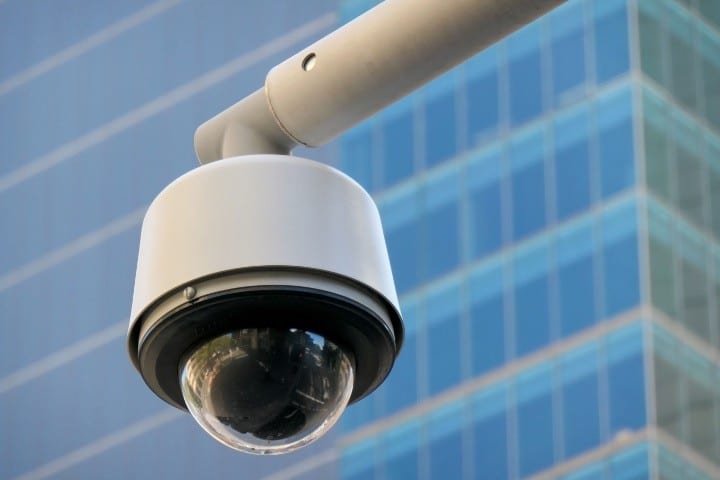by Angeline Tan, The New American:

SINGAPORE — Australia will remove Chinese-made security cameras from some government buildings to make sure that the venues are “completely secure,” the country’s defense minister said on February 9.
This latest declaration mirrored similar actions taken in the United States and Britain, which have both tried to stop government departments from deploying Chinese-made cameras in sensitive locations. Both countries had previously voiced concerns that Chinese companies could be coerced to share intelligence gathered by the cameras with Beijing, should the latter demand it.
TRUTH LIVES on at https://sgtreport.tv/
Beijing lambasted Australia for “misusing national might to discriminate against and suppress Chinese enterprises,” and urged Canberra to ensure “fair” treatment for its businesses in the country.
At least 913 Chinese-made cameras have been deployed across more than 250 Australian government buildings, based on official figures assembled by opposition politician James Paterson. The buildings involved include offices and facilities relating to the departments of defense, foreign affairs, and finance, as well as the attorney general’s department.
Australian Defense Minister Richard Marles said officials would find and take away all cameras found within the department’s wide range of offices and facilities. “It’s a significant thing that’s been brought to our attention and we’re going to fix it,” he told national broadcaster ABC. “It’s important that we go through this exercise and make sure that our facilities are completely secure.”
Moreover, the government-funded Australian War Memorial — a vast complex in Canberra — confirmed it would eliminate a small number of Chinese-made cameras due to an “abundance of caution.”
Other government agencies refused to comment, or alluded back to Marles’ statements.
Paterson, a staunch opponent of the Chinese government, had contended that Australian government buildings were “riddled” with “spyware,” and that every Chinese-made camera should be immediately removed.
The cameras were produced by companies Hikvision and Dahua. Both have been blacklisted in the United States, which barred the import of surveillance equipment made by the two companies last November as they were “an unacceptable risk to national security.”
In Britain, a group of 67 lords and members of Parliament asked the government to ban Hikvision and Dahua last July, after reports that their equipment had been used to spy on Uighurs in Xinjiang.
Hikvision remarked that it was “categorically false” to portray the company as “a threat to national security.” “No respected technical institution or assessment has come to this conclusion,” the company said. “Our products are compliant with all applicable Australian laws and regulations and are subject to strict security requirements.”
At a regular briefing in Beijing, Chinese foreign ministry spokesman Mao Ning said: “We hope Australia will provide a fair, just and non-discriminatory environment for the normal operations of Chinese enterprises. We oppose any wrong action of stretching the concept of national security and misusing national might to discriminate against and suppress Chinese enterprises.”
In 2018, Australia was one of the first countries in the world to ban Chinese telecommunications company Huawei from its 5G mobile phone network. Former Prime Minister Malcolm Turnbull, who made the move, said it enabled Australia to “defend our own sovereignty.”
Similar Huawei bans are now underway in the U.S., Britain, and Canada — which along with New Zealand and Australia form the Five Eyes spying alliance.
Meanwhile, Australia’s center-left government has been attempting to reboot the country’s relationship with China since assuming power in May last year. China had imposed heavy tariffs on key Australian exports in 2020, at the peak of a heated fracas with Australia’s former government.
Australian Foreign Minister Penny Wong visited Beijing in December last year for discussions with her Chinese counterpart, Wang Yi. Her visit commemorated the 50th anniversary of the establishment of diplomatic ties between the two countries. Wong’s visit also indicated the thawing of hitherto frosty diplomatic ties that saw the suspension of ministerial-level contacts and China’s enforcement of major bans on key Australian exports. Her visit was perceived as a key diplomatic triumph for Australia’s Labor government.
Wong’s visit followed a meticulously arranged series of gestures from both sides, which began with the arrival of a new Chinese ambassador, Xiao Qian, in Canberra in 2021. Although Xiao’s message that Beijing was open to repairing ties was reportedly dismissed by the previous government under then-Prime Minister Scott Morrison, the new team under Anthony Albanese seemed more open to such a gesture.
An initial meeting between the two countries’ defense ministers on the sidelines of the Shangri-La Dialogue in Singapore last June preceded talks between the foreign ministers of both sides. In November, Albanese met with Chinese authoritarian leader Xi Jinping at the Bali Group of 20 (G-20) summit.
The new Albanese government appears set on not repeating its predecessor’s hawkish approach toward the communist regime in Beijing, allegedly to raise political support domestically and earn Washington’s praise.
Read More @ TheNewAmerican.com



